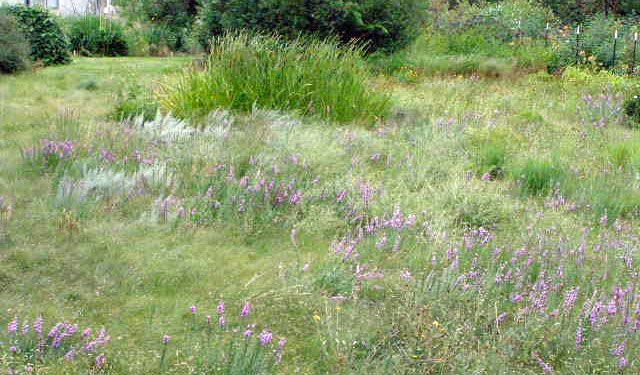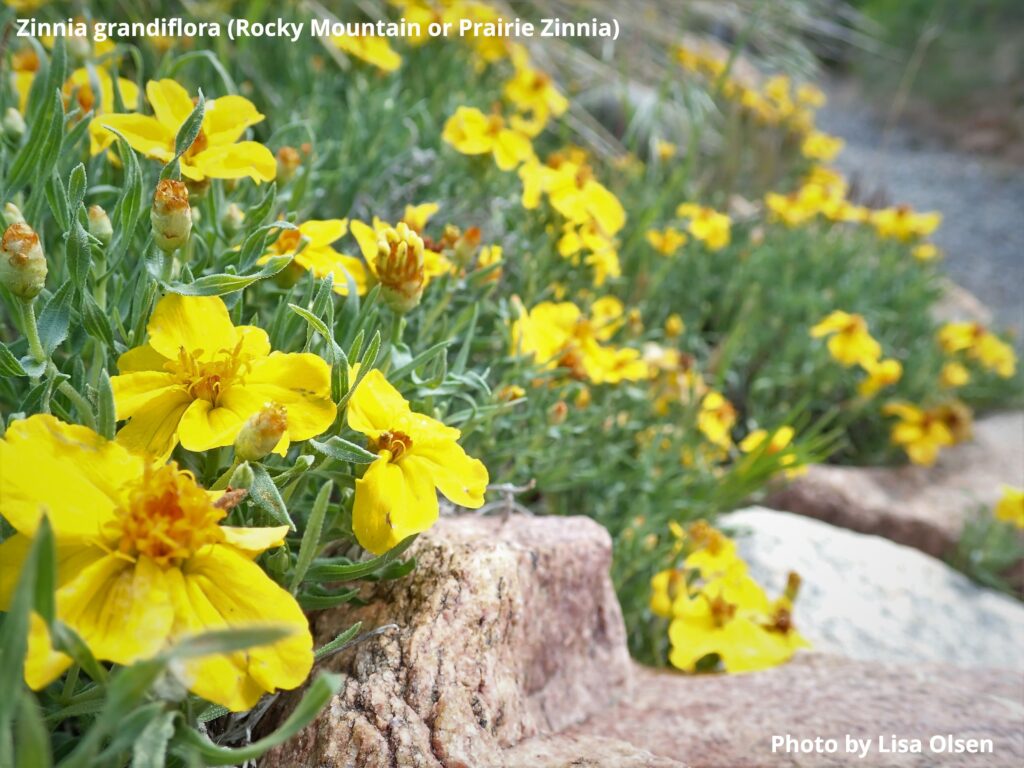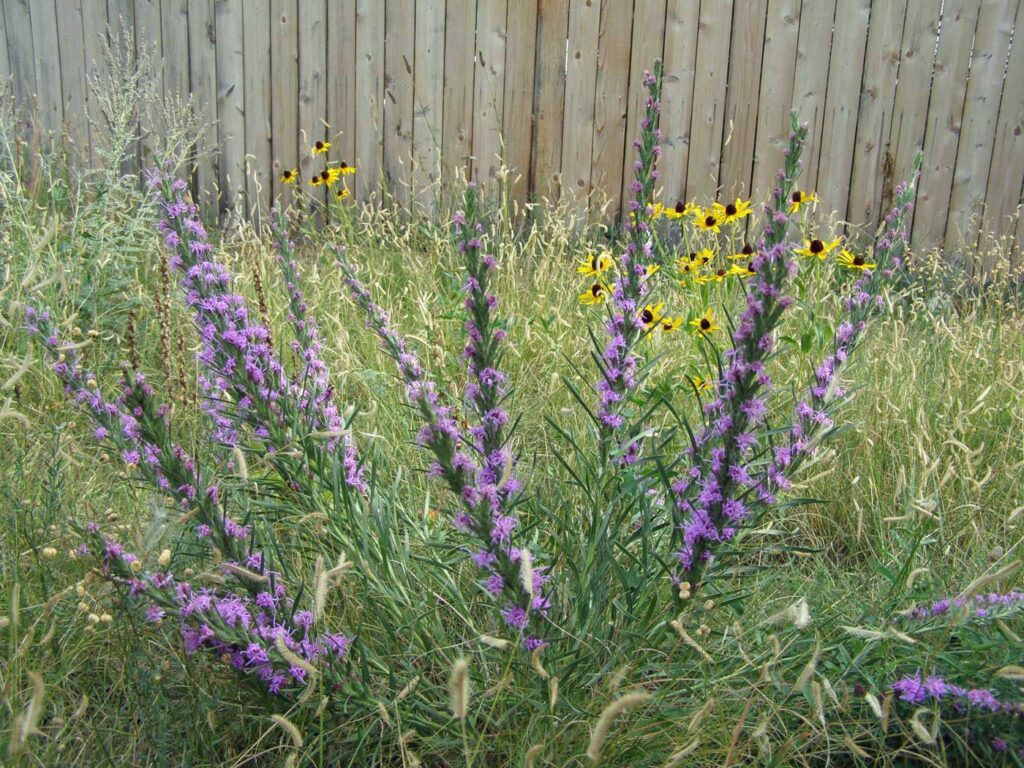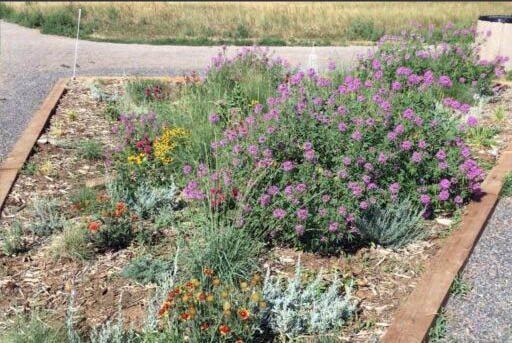By Deb Lebow Aal

As we approach the winter solstice, I am taking time to pull back, pull inside, reorganize, and yes, already think about my landscape for next year. We gardeners don’t only find solace and joy in working in our gardens, but planning them as well, and as a respite from the tumult of the world. In fact, we find peace and profound serenity. It’s time to plan, again.
What I want to do next year is to plant a pocket prairie. It ticks many boxes. In a time of climate chaos and insect and bird apocalypses, how and who we garden for matters dramatically. So, I am recycling and revamping an article I wrote a few years ago on this topic.

If we are native plant advocates, often our goal is to bring the prairie back. We plant lots of native grasses, Gaillardia and Zinnea grandiflora, plants we know were here long ago, but we really can’t bring the prairie back this way. We actually can’t bring the prairie back the way it was at all.1 But we can do better than we are doing. We can put in pocket prairies, i.e., small areas of our landscape dedicated to emulating what the prairie looked like and did for the ecosystem. Pocket Prairie is not a new term or concept. It is about taking whatever acreage or square inches you have, and turning it wild, but with intention. So, instead of planting native plants willy nilly in the middle of our established flower beds, or just not mowing our grass, the idea is that we take a portion of our landscape and dedicate it to prairie plants.

Why do this? Well, at the risk of a highly controversial statement, gardens are already problematic. When we make a garden, we have taken plants out of their natural environment, or their culture, and plopped them into an arrangement of our making. I find this creative, and I’m guessing you do too, but I understand that I am not re-making nature. I am making something I find aesthetically pleasing that hopefully benefits pollinators and other creatures in some way. But, nature has a lot to teach us. As Brian Vogt states in his book “A New Garden Ethic, “We barely understand a prairie’s culture, a complex structure formed over countless generations where mutualism and exclusion create healthy and resilient ecosystems above and below the soil line.”2 With pocket prairies, we are actually trying to reconstruct a tiny piece of native ecology, knowing of course that it is very hard to actually do what nature does. We are doing this to sequester carbon, and provide an area that actually benefits wildlife, among other benefits. Once established, a pocket prairie will be highly resilient and drought tolerant.
And, it is a pocket prairie, not a pocket prairie garden. The term garden implies, I think, that it is for human use. We are always looking first at what humans want – even pollinator gardens are what humans want. We want more butterflies and hummingbirds for us to see, and pollinators to grow our food. With the pocket prairie, we attempt (it’s hard, I know) to let these plants do what they want. Native plants, as you know, will wander. You may first design this to have the smaller plants up front, and the larger in back, and the yellow with the purple, but they will go where they want to go. So, although these pocket prairies can be “designed,” they should be more like what you see when you hike. More “natural,” which is to say, less designed. That’s actually freeing, I think. It’s a different aesthetic than a garden. And, it’s gorgeous (yes, that is human-centric and highly personal).

Downsides? The downside is it is, as Steve Roels, former Horticulturist for the town of Louisville, CO, who designed and installed several Pocket Prairies, coined, “chaos gardening.” I am now adopting that phrase for my yard. As stated above, it is a different aesthetic from the garden design we normally see. Much wilder. And perhaps the other downside is that it will require maintenance in the form of weeding, but all gardens require maintenance. Some mow their pocket prairies, or meadows, once or twice a season, but that’s a heck of a lot less than mowing a non-native lawn. Another downside to some is that this is an area you should not walk on. And, of course, there is the initial preparation of the site.
So, how does one create a Pocket Prairie?
- Choose a sunny, well-ventilated area. These plants need 6-8 hours of sun a day.
- Start with a manageable plot size. The larger the site, the larger the workload. You are also most likely experimenting, and we make mistakes. Learn from them before going on to the next area.
- If you’re taking out grass to put in a pocket prairie, I highly recommend you read information on our website on the best ways to do that.
- If you want to amend your soil, there are websites for that as well. However, for native plants, you should not need to amend your soil unless it is severely degraded.
- Choose several different species of plants. Consult local ecoregion guides for plants indigenous to your region. Generally, prairies are dominated by grasses and forbs. No large trees or shrubs. A great place to start is the pollinator guides at The Pollinator Partnership, and an article we wrote on plants that should be here on the front range.
- Buy seeds or plants from reputable nurseries specializing in native plants.
- If seeding your area, spread seeds evenly by hand, then press into the soil. Planting by seed will take longer to establish. If planting plants, plant in a matrix style, placing grasses in first. Read Benjamin Vogt’s book Prairie Up.
- Water well at the beginning. You should be able to taper off watering fairly quickly – that’s very site-specific and weather dependent.
- Weed as necessary, taking out invasives, and mow once a year.
- And, of course, don’t use pesticides. I am guessing I didn’t have to say that if you are reading this.
And don’t clean up your prairie like it’s your kids’ messy room. Messy is good!
I want to emphasize that I have only dabbled in this. It’s my goal for next year. I may have more to write about this once I have completed the process. There is so much more information out there on Pocket Prairies, you don’t have to rely on the list here.
Worth a try? Carve out a few feet to start a pocket prairie and you’ll be on your way. If we all did that, we could make a dent in the Homegrown National Park, a grassrootscall-to-action to restore biodiversity. Please, if you have a pocket prairie, send photos to [email protected]. We will be highlighting these areas in future newsletters. Thank you!
- The Front Range of Colorado and much of the Midwest was short and tall grass prairie. Current estimates are that less than 15% of the short grass prairie remains now, and less than 4% of tall grass prairie. But, a real prairie takes centuries if not more to establish, so we are not going to be bringing back a prairie overnight. ↩︎
- I highly, highly recommend this book! See A New Garden Ethic, Page 57. ↩︎
